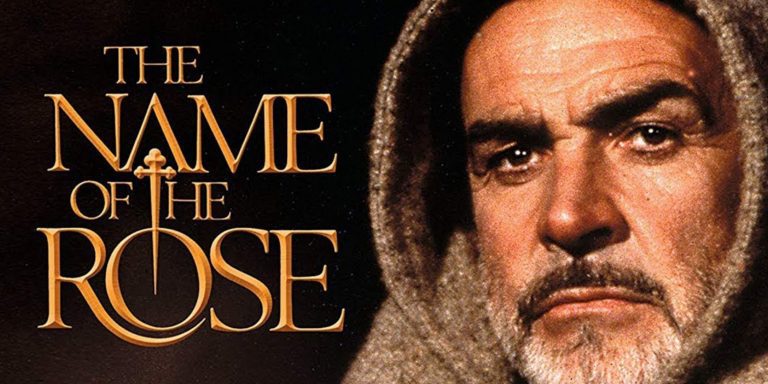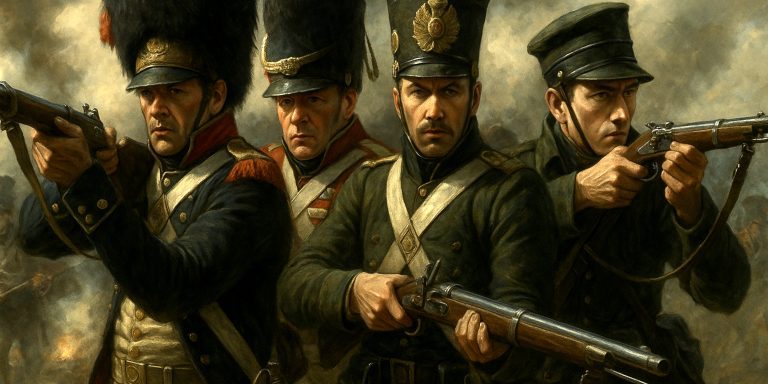
If medieval infantry won wars, cavalry defined how they were fought. From thunderous knightly charges to nimble steppe raiders, mounted troops embodied mobility, power, and social prestige. Yet not all horsemen were created equal, some shaped centuries of warfare, while others were relics of fading feudal dreams.
S-Tier: The Battlefield Deciders
Mongol Heavy and Light Cavalry (13th–14th centuries)
Weapons: Composite bow, Turko-Mongol sabre, lance, mace, dagger.
Battles: Kalka River (1223), Liegnitz (1241), Ain Jalut (1260).
Why They Matter: The finest combination of speed, communication, and discipline the medieval world ever saw. Light horse archers softened enemies, heavy cavalry finished them. Their curved sabres were deadly from horseback, optimised for slicing through armour and limbs alike.
Mamluk Cavalry (13th–15th centuries)
Weapons: Lance, saif (curved sword), composite bow, mace.
Battles: Ain Jalut (1260), Homs (1281), Marj al-Saffar (1303).
Why They Matter: Former slaves turned elite warriors, they defeated the Mongols and Crusaders alike. Trained from childhood, each Mamluk combined knightly shock tactics with steppe archery skill.
French Gendarmes (15th–16th centuries)
Weapons: Lance, arming sword (Oakeshott Type XVa), estoc, mace.
Battles: Fornovo (1495), Pavia (1525).
Why They Matter: The last and greatest expression of the medieval knight. Armoured from head to hoof, they represented professional, disciplined cavalry rather than feudal retinues. Their estocs were thrusting swords designed to pierce plate, precision instruments for close combat.
Ottoman Sipahi (14th–16th centuries)
Weapons: Lance, kilij (curved sabre), bow, dagger.
Battles: Nicopolis (1396), Varna (1444), Mohács (1526).
Why They Matter: The Ottoman version of the knight, paid in land rather than honour. Their discipline and coordination with Janissaries gave the empire unmatched strategic reach.
Hungarian Hussars (15th–16th centuries)
Weapons: Lance, sabres (early szabla), shield, war hammer.
Battles: Breadfield (1479), Kenyérmező (1479).
Why They Matter: The prototype of light cavalry that would dominate Europe for centuries. Fast, fearless, and flamboyant, they perfected the art of rapid strike and retreat.
A-Tier: The Professionals and Champions
English and French Knights (11th–15th centuries)
Weapons: Lance, arming sword (Type XII–XV), mace, dagger.
Battles: Poitiers (1356), Agincourt (1415).
Why They Matter: The face of medieval warfare. Their heavily armoured charges could crush infantry lines, though discipline and terrain often decided their fate. The arming sword evolved alongside them, from broad slashing blades to narrow thrusting points.
Teutonic Knights (13th–15th centuries)
Weapons: Lance, arming sword (Type XIV–XVa), flanged mace, dagger.
Battles: Lake Peipus (1242), Grunwald (1410).
Why They Matter: Religious zeal and German precision made them terrifying. Their defeat by Polish-Lithuanian forces marked the end of crusading knighthood in the north.
Byzantine Kataphraktoi (10th–13th centuries)
Weapons: Kontarion (long lance), spathion (straight sword), mace, bow.
Battles: Manzikert (1071), Myriokephalon (1176).
Why They Matter: The first truly armoured cavalry, ancestors to the knight. They combined heavy armour with composite tactics, lance, bow, and shock charge.
Spanish Caballeros (12th–15th centuries)
Weapons: Lance, espada ropera (early form), falchion, javelins.
Battles: Las Navas de Tolosa (1212), Rio Salado (1340).
Why They Matter: Veterans of endless frontier warfare. They mastered combined arms fighting against Muslim light cavalry and Berber tactics.
Polish Winged Hussars (16th century)
Weapons: Lance, Polish sabre (szabla), koncerz (long thrusting sword), war hammer.
Battles: Orsha (1514), Vienna (1683, later period).
Why They Matter: The most iconic cavalry of the late medieval world. Their shock charges broke pike squares that other cavalry feared to touch.
B-Tier: The Reliable and Formidable
Norman Cavalry (11th–12th centuries)
Weapons: Lance, spatha (early knightly sword, Type X), kite shield.
Battles: Hastings (1066), Civitate (1053).
Why They Matter: The foundation of Western knightly warfare. Their disciplined wedge charges and use of couched lances transformed the mounted warrior into an aristocratic ideal.
Turkish Ghazi Cavalry (13th–15th centuries)
Weapons: Bow, Turkish kilij, spear, dagger.
Battles: Bapheus (1302), Nicopolis (1396).
Why They Matter: Irregular frontier horsemen who carried the Ottoman frontier on their shoulders. Skilled archers, unpredictable in battle, but deadly in pursuit.
Italian Condottieri Cavalry (14th–15th centuries)
Weapons: Lance, storta (Italian sabre), mace, dagger.
Battles: Anghiari (1440), Fornovo (1495).
Why They Matter: Professional mercenaries, more cautious than courageous. When properly led, they could outmanoeuvre anyone.
Serbian and Balkan Heavy Cavalry (13th–15th centuries)
Weapons: Lance, bastard sword (Type XIIIa), mace.
Battles: Kosovo (1389), Maritsa (1371).
Why They Matter: Influenced by Byzantine and Hungarian models, they combined resilience with brutal close fighting.
Armenian Nakharar Cavalry (10th–13th centuries)
Weapons: Lance, spathion, bow, mace.
Battles: Ani (1045), Manzikert (1071).
Why They Matter: Noble-born warriors of the Caucasus, skilled in both shock combat and steppe tactics.
C-Tier: The Brave but Limited
Arab Faris Cavalry (7th–12th centuries)
Weapons: Lance, saif, bow.
Battles: Yarmouk (636), Manzikert (1071).
Why They Matter: Skilled riders and archers but lightly armoured. Perfect for raiding and skirmish, less so for heavy engagements against Western knights.
Russian Druzhina Cavalry (10th–13th centuries)
Weapons: Spear, Type XI sword, axe, mace.
Battles: Neva (1240), Ice Battle (1242).
Why They Matter: Elite household retinues with mixed steppe and Norse influences. Brave but limited by small numbers and heavy casualties.
Cuman Light Cavalry (11th–13th centuries)
Weapons: Composite bow, curved sabre, spear.
Battles: Kalka River (1223), Mohi (1241).
Why They Matter: Skilled archers but unreliable allies. Their mobility made them valuable scouts and mercenaries.
Scottish Border Horse (15th–16th centuries)
Weapons: Spear, Basket Hilt Broadsword, Back Sword, dagger.
Battles: Flodden (1513), Ancrum Moor (1545).
Why They Matter: Light raiding cavalry suited to border warfare, fast but lacking the shock of true heavy horse.
Lithuanian Light Cavalry (14th–15th centuries)
Weapons: Lance, curved sabre, bow.
Battles: Grunwald (1410), Płowce (1331).
Why They Matter: Flexible and swift, but more effective in harassment than decisive charges.
D-Tier: The Outdated or Unreliable
Feudal Retainers (11th–13th centuries)
Weapons: Spear, Type X or XI sword, shield.
Why They Matter: Brave but untrained, their value depended entirely on the lord commanding them.
Peasant Horsemen (Various Regions)
Weapons: Spears, agricultural tools, scavenged swords.
Why They Matter: Poor horses, poor equipment, and poorer training. Used for scouting, rarely for fighting.
Tribal Irregular Cavalry (Various Regions)
Weapons: Spear, short curved sword, bow.
Why They Matter: Skilled riders but often uncoordinated. Brilliant in raids, chaotic in pitched battle.
Mercenary Raiders and Routiers (14th–15th centuries)
Weapons: Lance, falchion, club, dagger.
Why They Matter: Loot mattered more than victory. They were often as dangerous to their employers as to their enemies.
Historian’s Reflection
Cavalry ruled the Middle Ages as a symbol of social dominance and military prowess, yet its evolution mirrors the decline of feudal privilege. The Mongols and Mamluks proved that skill and discipline outweighed birth, while European knights clung to the pageantry of the charge even as gunpowder rendered it obsolete.
The sword tells the same story. From the straight spathion of Byzantium to the curved kilij and szabla of the East, each blade reveals an era’s priorities, precision, speed, or sheer force. In the end, the best cavalry were not those with the finest horses, but those who fought with purpose, coordination, and adaptability.



